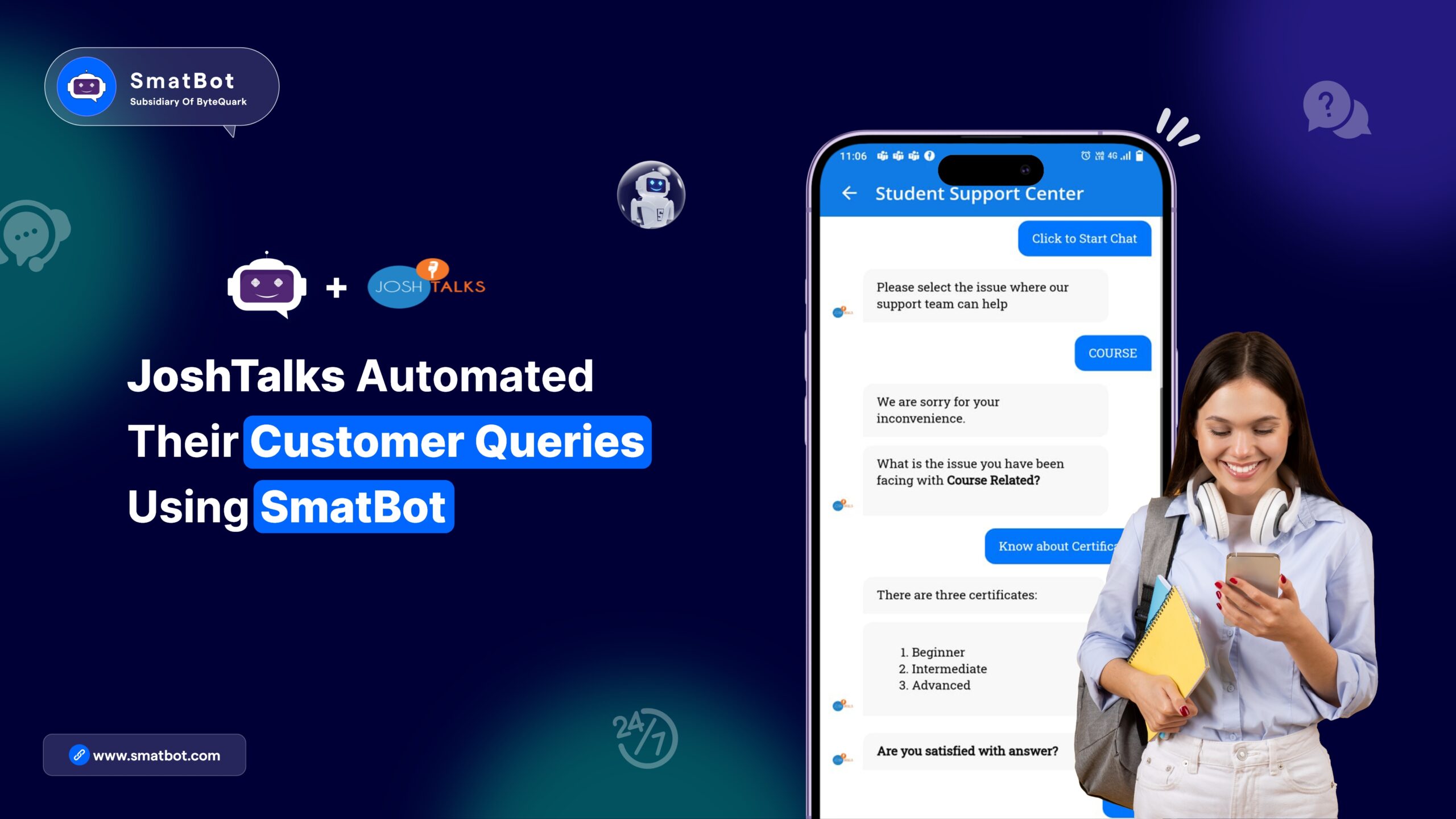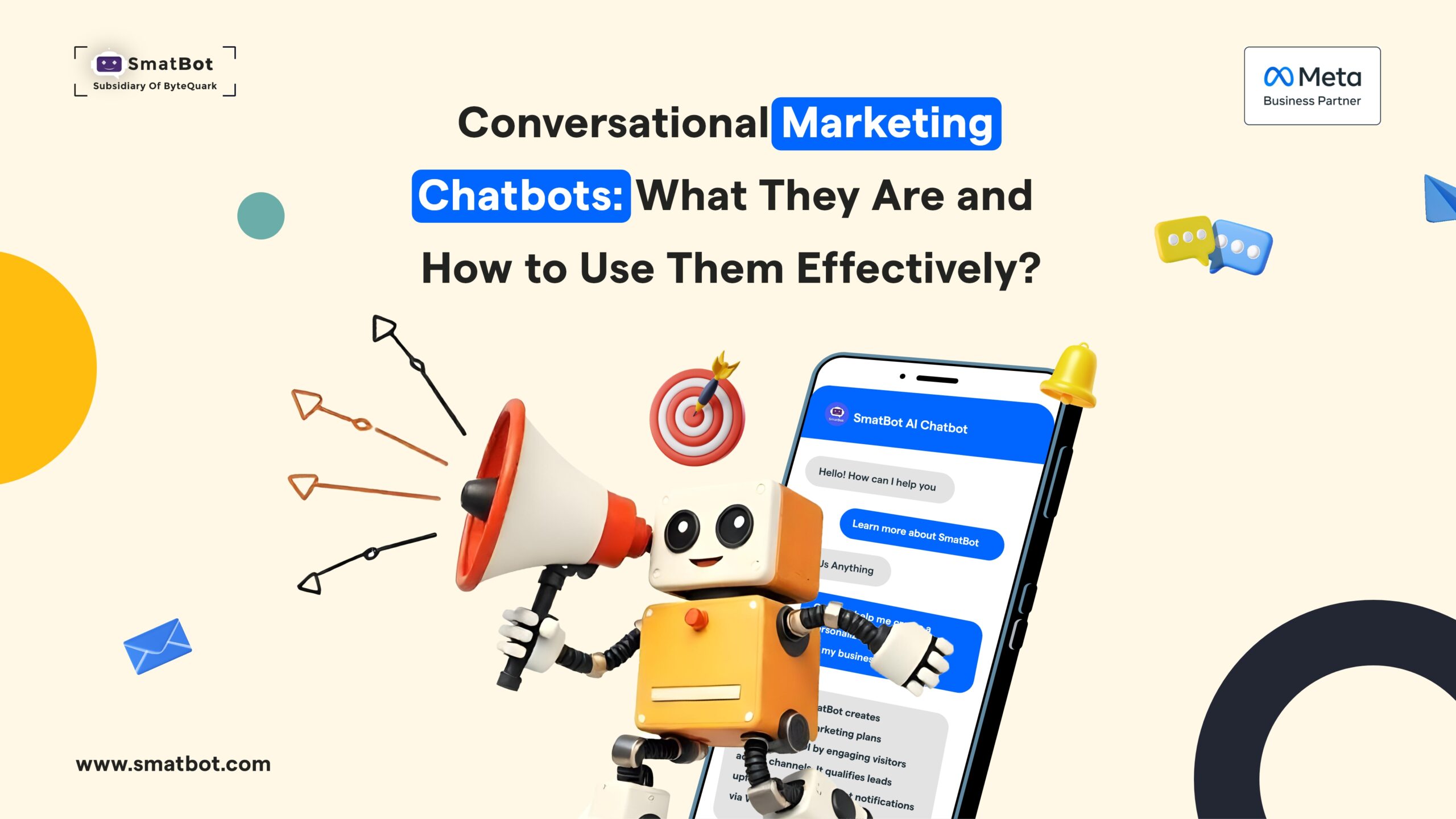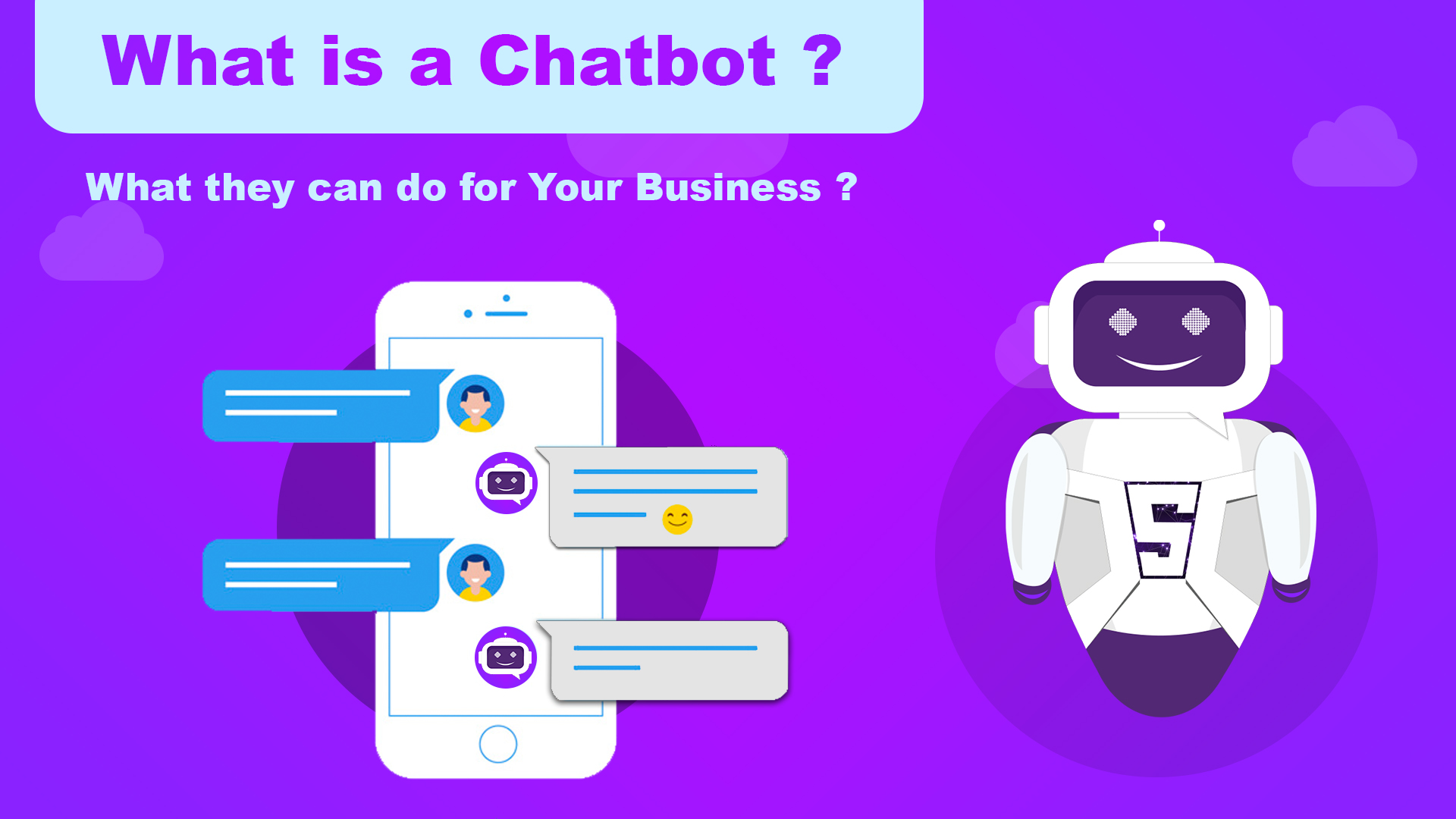Chatbots – Rise of conversation marketing and why does it matter to you!

Bots are no more just a storyline in sci-fi movies, but they are part of our day to day work and home activities. Certain facts such as by 2020, 85% of the human customer interaction will be managed without a human intervention clearly states that how bots are going to drive the future of conversation marketing.
Conversation marketing is all about driving more sales with the first point of conversation on digital channels such as website and social media for any brand/organization. Conversational marketing, unlike traditional digital mediums of cold emailing and lead capturing using forms, focus on targeted real-time messaging and intelligent chatbots that understand the context of chats.
The rise of live chats, driven by human agents is one of the examples of conversational marketing and they gained popularity to a huge extent because of their capability to address first level queries of website visitors but are they –
- Available 24*7?
- Scalable enough to handle rising website traffic?
- Going to stay within the organization lifelong?
- Working round the clock with the same efficiency?
One word answer is NO. The simple reason being they are humans and are meant to do errors.
Chatbots are becoming mainstream because of three primary reasons:
- Companies hold lots of website data that can be used to train machines to automate primary level of interaction and qualify them as leads.
- Prospects hate waiting, and they can easily switch for competitor that is providing more personalized and quick response to address their queries.
- Businesses using AI for lead capturing tasks can often free up inside sales or other resources and reinvest those resources in humans executing on the insights produced by AI.
Conversational Marketing Framework:
- Website: Websites are the first interaction point, serving as an anchor for all lead generation and sales campaigns.
- Campaigns: Inbound or outbound campaigns, both are meant to get prospects on website and showcase them different content assets.
- Lead Generation: The objective is to make website visitors sign up for demos. Maintain a healthy lead gen pipeline to target customers at different funnel rate.
- Analytics: Measure different campaign success rates to improve campaigns and optimize conversion rate from website visits.
- With the image above, website is the centrepiece of all the digital marketing initiatives and to build a healthy pipeline, it requires to capture visitor attention to get their contact details. The traditional lead gen forms are lacking the interactive and targeted approach to gather contact details and thus unable to build a solid lead nurturing pipeline. As per a research that is industry and organization size agnostic, most of the 60% to 70% of the website visitors are first time visitors and thus are sceptical about sharing their contact information.
How chatbots are changing this scenario:
Chatbots are developed keeping industry, organization size, FAQs etc in mind to give highly personalized interaction to visitors and keep them engaged throughout their session time on website based on their location, time and tracking UTM parameters for their source. Here are some of the different ways how smart and intelligent chatbots make the journey easy from visitors to customers –
Highly personalized conversation starter for lead generation:
Chatbots, like SmatBot interact almost similarly like human beings, an added advantage with them is that they interact uniformly with every website visitor and thus are highly efficient in capturing details. As we said earlier they can track user details such as location, time and UTM parameters, they can customize chat based on it, which is not possible always with human agents because of the simple fact that we are coded for doing repetitive tasks.
Directing them towards conversions:
Bots are more efficient than human beings if they are designed for specific tasks for instance if an algorithm is written to sort alphabets and numbers there are very less chances that bots will do a mistake, unlike humans. In similar fashion, bots are designed to lead visitors towards conversions in a precise manner that is using the highly acclaimed questions that can entice visitors to drop their contact details. With our research and observation for our clients that are using chatbot on their websites. SmatBot’s one client has recorded that out of 2411 unique conversation that has been started with chatbots, 1960 visitors dropped their contact details with a lead generation rate of 81%. This is just for website and goes further up when they are deployed for unique landing pages.
Integrated with a call to action:
Chatbots, like SmatBot are designed for businesses to provide website visitors with an appropriate call to action to get them engaged and move forward in buyer’s journey. For instance, if a visitor on real estate website is looking chatting to look for appropriate properties in his budget or area, SmatBot will prompt him to book property viewing or chat with sales agent on WhatsApp or even call them directly.
Contextual understanding:
When we say smart chatbots, it means they are really smart and one perfect example is SmatBot. A website visitor can ask the same question in a different way, Chatbots, like SmatBot should be able to comprehend and answer appropriately otherwise it can be a real turn off for prospects. With advancements in the AI and ML algorithms bots are getting near to human accuracy in understanding as per their context, while they can be asked in n number of ways. SmatBot is one of the leading example of these kinds of bots.
Analytics module:
Chatbots are a way to move from analog business model of handling website queries to digital way and thus it helps in improving the process of lead qualifying, making bots smarter and give insights such as conversations initiated, time per session, daily leads, exit questions, leads generated, source of leads, pages they visited, links they clicked etc. This is an evolving module and will keep on getting updated with the customer need and requirements.
Simple to set up and integrate:
Chatbots like SmatBot are very easy to set up and integrate with blogs, website, landing pages, social media accounts providing uniform experience to visitors on every digital asset. The easy to use interface and backend module doesn’t require any code knowledge and can be easily done by any marketing team member. It can be integrated with the leading CRMs, email, google sheets with notification system that notifies every time a lead is generated.
The wrap up:
Chatbots are the future and there’s no denial in it. It is better for companies to adopt a futuristic view and start looking for a perfect solution that can be customized as per their business requirements to accelerate their brand engagement and lead generation. If you are just getting started on the journey, to increase digital lead generation why not leverage tools that have the intelligence built in? If you have achieved a good level of maturity and efficiency in website implementation, it is time to embrace automation and AI in form of smart bots and let them do the work for you. Now is the right time to get started!
About SmatBot:
SmatBot, a platform by SmatSocial is an AI-powered chatbot for B2B and B2C websites. SmatBot is helping hundreds of businesses to accelerate their Lead Generation with easy to build and automated chat interface. SmatBot helps in designing automated chatbots with an interactive user interface to interact with visitors over the website by keeping them engaged by answering their queries with a human touch. Our bots help in reducing customer acquisition costs, reduce in bounce rate and increase in session time and enable new digital customer acquisition models. The platform is powered by Natural Language Processing (NLP) for understanding inputs and sending answers to users in human language.
















